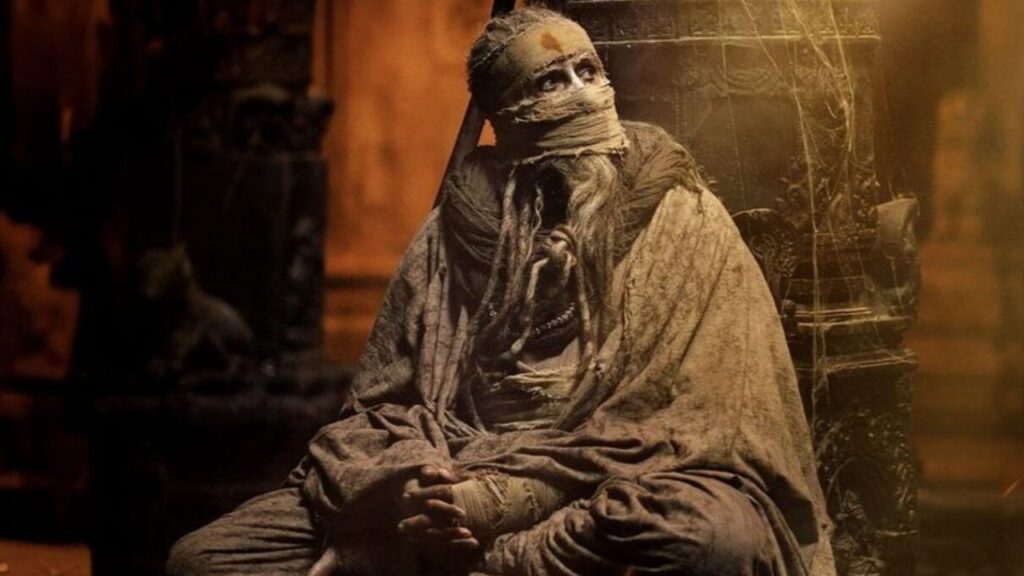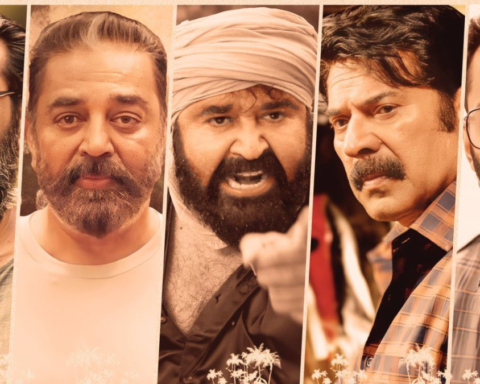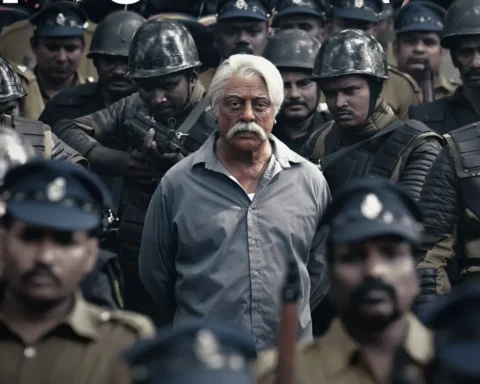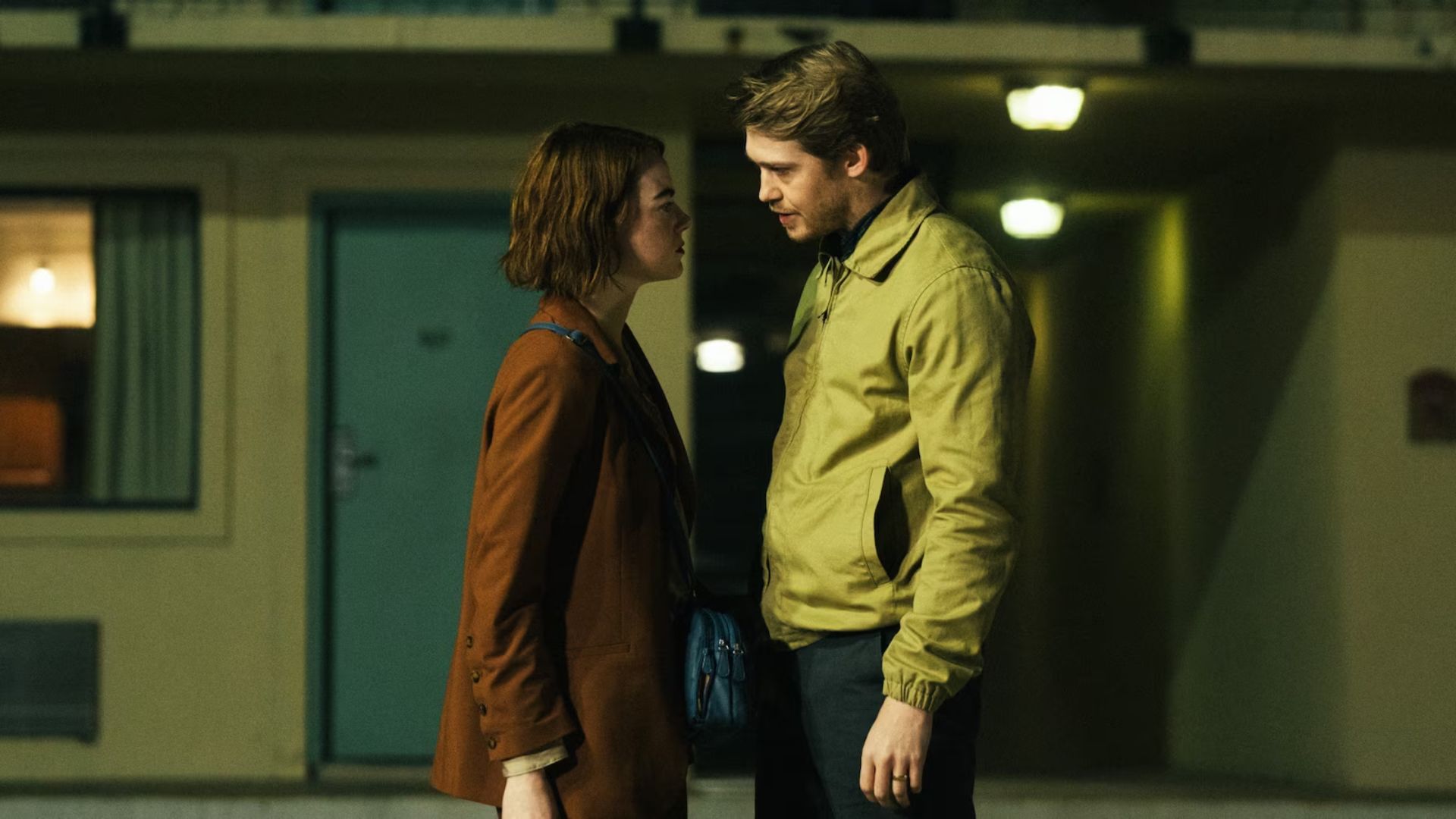The Indian epic Mahabharata has long been an inspiration to Indian filmmakers. Notable examples include Shyam Benegal’s Kalyug (1981) and Mani Ratnam’s Thalapathi (1991), which instantly come to mind. Both films take the premise of the mythological text and set their stories in contemporary societies plagued by greed, violence, and crime, reflecting a world that is both ruthless and compassionate. Ashwin Nag’s recent outing Kalki 2898 AD borrows characters who gallantly participated in the Kurukshetra War, utilizing both trickery and bravery to gain succession between two groups of cousins. Nag sets his ambitious tale in a futuristic setting filled with computer-generated images of a ravaged and cruel world where people, governed by dominating powers, are awaiting a miracle to rescue them from their misery. With actors cast from various film industries across the country, including Bollywood, Tollywood, Mollywood, and Kollywood, the dystopic Telugu action drama carefully balances itself between being excessively extravagant and being highly exaggerated in its entertainment value. From the first shot, the filmmaker unleashes the limitless possibilities of technology to engage the viewers. No doubt it is a visionary endeavor intended to amaze, but its myopic focus on visual spectacle overrides one of the most crucial aspects of cinema: the screenplay. Whether it’s a big-budget superhero story or a low-budget tale of an underdog, the element that provides longevity to any project, beyond short-lived moments of thrill, is a series of compelling moments woven into a coherent and orderly plot structure. Unfortunately, this extravagant production tends to overlook this aspect, and as a result, ends up as a pleasant escapism that ultimately falls short of lasting impact.
In 3102 BC, after the Kurukshetra War, Lord Krishna curses Ashwathamma (Amitabh Bachchan) to survive as an immortal and achieve his salvation at a predetermined time in the future. Fast forward to 2898 AD, we travel to the last surviving city of the world Kasi which is now ruled by the merciless authoritarian Supreme Yaskin (Kamal Haasan), who resides in an inverted-pyramidal structure known as the Complex. The city has entered a devastating stage where citizens fight among themselves over a half-eaten apple. Fertile women are artificially impregnated, and after 120 days of conception, their serum is collected and injected into Yaskin as part of an experiment. However, it always proves to be a failure, and the experiment continues, putting the lives of many women in danger. SUM-80), later christened Sumathi (Deepika Padukone), has hidden her 150-day pregnancy because she wants to give birth to the child. Though she gets caught, one of the rebels from the hidden city of Shambhala helps her escape the Complex. Soon, Commander Manas (Saswata Chatterjee) announces a bounty to capture her. Bhairava (Prabhas), a bounty hunter who has never failed in any mission, sees it as a golden opportunity to secure his future. Along with his AI droid vehicle, Bujji (voice-over by Keerthy Suresh), he goes after Sumathi. Ashwathamma, who has been in a state of meditation, becomes active and embarks on a mission to protect Sumathi, who is prophesied to be the mother of Kalki, one of the incarnations of Lord Vishnu. As Bhairava and Ashwathamma lock horns, a reality is revealed that will save mankind from unending oppression.

Nag Ashwin and his co-writer, Rutham Samar, have approached the film as the first installment in the Kalki Cinematic Universe by assiduously introducing certain characters and events that pique our interest. But as the story progresses, we encounter scenes that seem carelessly designed and do little to narrative development. Bhairava is helped by his love interest, Roxie (Disha Patani), to fulfill his long-cherished dream of entering the Complex. Once inside, there is a song sequence, after which he is thrown out for flouting the decorum of the place. This entire episode contributes nothing to the overall structure and could have been deleted without affecting the viewing experience. Ram Gopal Varma and S. S. Rajamouli make special appearances in the film, but these serve only for some laughs and add nothing more.
Characters like Mariam (Shobhana), the leader of Shambhala, and Kyra (Anna Ben), a rebel, are introduced solely to protect Sumathi, sacrificing their lives without much depth to their characters. The motive behind Yaskin injecting himself with the serum to become youthful is also not explained, which would have generated more interest in the antagonist. As the film reaches its climax, some revelations attempt to bring coherence to the story. The film ends with a cliffhanger, leaving us eager to learn the fate of Sumathi and her unborn child. Will Ashwathamma be able to convince Bhairava to join the rebels of Shambhala? Will Yaskin succeed in his attempt to rejuvenate himself? However, the drag experienced for more than half of its length has already exhausted the senses by the time we reach the enlivening ending. As a result, the film becomes unmistakably tedious. It is also excruciatingly long and feels as if, during the scripting stage, the film appeared too lengthy, and instead of trimming scenes, the decision was made to break it into sequels. Despite its flaws, the climactic action sequences manage to leave a lasting impression, delivering a somewhat satisfying end to the narrative.
Since the film has compromised on perspective writing in favor of star worship, even that aspect has not been up to the mark. Any mainstream film that plays to the gallery usually pays special attention to the entry of its lead actor. When Bhairava makes his entry, we expect him to get into action mode without losing much screen time. However, upon encountering opponent bounty hunters, he engages in a spiel that is an unnecessary drag. It lacks the finesse seen in Salaar: Part 1 – Ceasefire (2023), where the action is withheld for a long time to build our emotions, and when the protagonist begins his mayhem, it results in an adrenaline release. In contrast, the stunts displayed by Ashwathamma are more exhilarating and filled with whistle-worthy moments. Whether he is reducing Bhairava to a pulp, overthrowing the Transformer-like version of Bujji, or holding a group of men upside down before flinging them into the thin air, these scenes are crowd-pleasers.

The cinematography of Djordje Stojiljkovic captures the dystopic world with the rusty color tones of the exterior of Kasi. The laboratories and the city of Shambhala are painted with a warm palette to generate the feeling of hope amidst darkness. Nitin Zihani Choudhary’s production design showcases style and finesse, creating a set that aligns seamlessly with the futuristic visual style of the narrative. The film’s overall ambiance transcends its artistic effects, locations, and gadgets, contributing to a unified and immersive experience. The film’s special effects skillfully deploy the latest techniques to enhance the visual impact, paying close attention to minute details in the primary action sequences. However, the younger version of Ashwathamma appears more like an animated creation and can be considered a minor blemish in the efforts of the team. The musical score by Santhosh Narayanan is not as rousing as required for a film of such scale. The editing by Kotagiri Venkateswara Rao has a rhythmic flow but struggles to bring cohesiveness to the overall structure due to the exaggerated nature of the script.
Amitabh Bachchan portrays Ashwatthama, nearly eight feet tall and undefeatable, who flies through the air like a Shaolin and combats his enemies with unmatched might, making his performance a delight to watch. Even in moments of helplessness, he maintains a rigid composure on his face and never allows himself to break down. The film puts him front and center of the narrative and makes him a redemptive hero of his own story. Prabhas, as Bhairava, is a man of ambition who prioritizes his goals over his conscience. His banter with Bujji adds comic relief to this high-octane drama, though his acting talent remains underutilized. Deepika Padukone, as SUM-80, brings a tenderness to this tale of brutality and destructiveness. Her silent expressions are enough to evoke sympathy for her plight. The moment before the interval, where she bravely walks through a narrow tunnel with streaks of fire emitting constantly, is indescribably thrilling. Kamal Haasan, as Supreme Yaskin, along with Shobhana as Mariam, Saswata Chatterjee as Manas, and Pasupathy as Veeran, shine in their supporting roles.
Overall, Kalki 2898 AD is undoubtedly a visual spectacle intended to elevate the status of action films in India to a new level. With the best technical team and some of the finest actors in the country, it has all the elements to guarantee a wild and unrelenting saga. However, viewers familiar with Hollywood action films of recent years will recognize this as an artistic creation drawing inspiration from them—films like Blade Runner, Star Wars, Mad Max, and the Marvel series, among others. There’s so much happening in the film, from its grand action set pieces to mythological explanations, that much of it appears redundant; not all of it is especially compelling. The impressively staged action sequences dominate the screen time. While the film excels in craftsmanship, its storytelling needs to be pushed to the limit in future editions to ensure a longer-lasting appeal.






